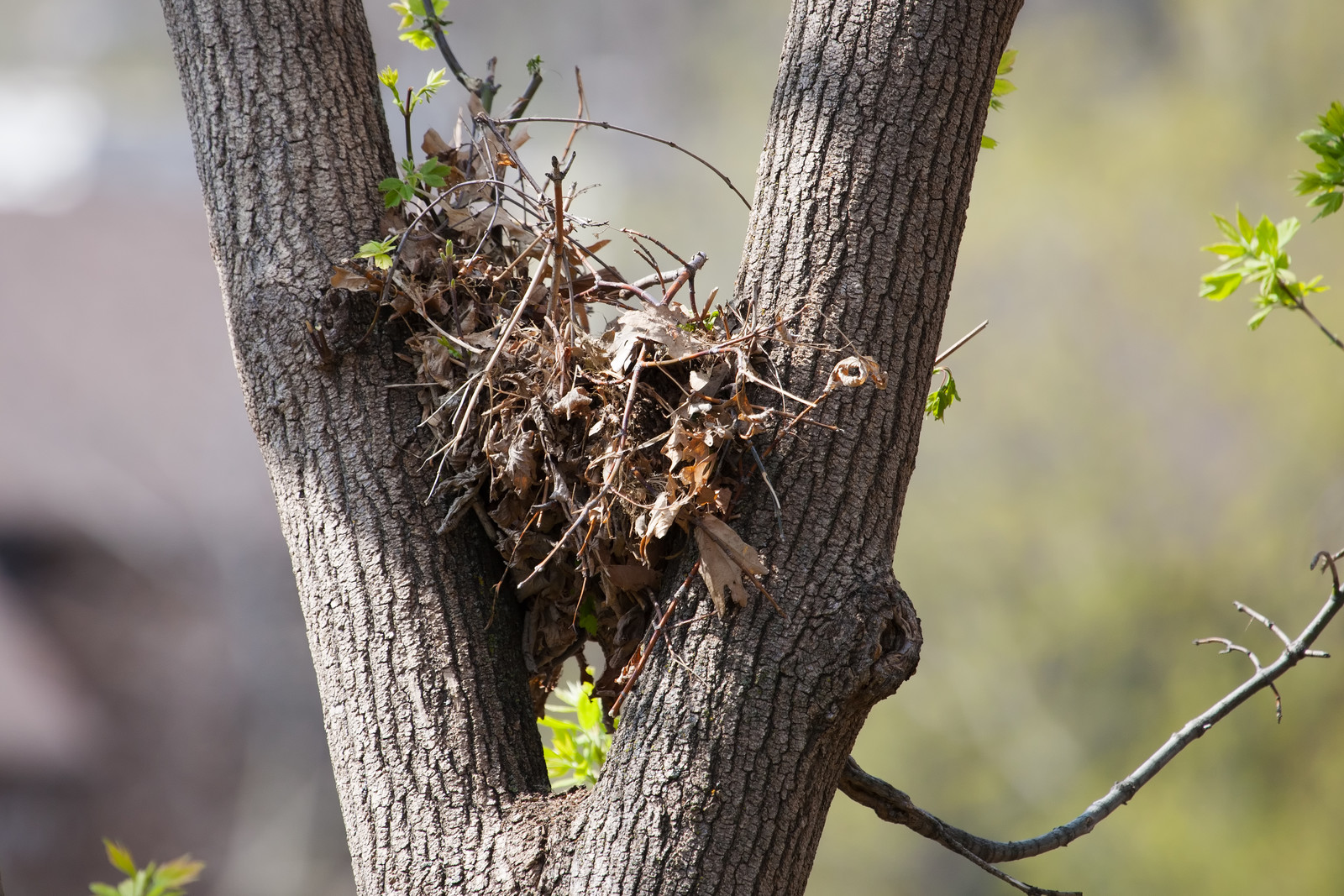There, way up high in that tree—see that ball of leaves? It sure didn’t get there on its own! It’s a squirrel’s drey, or nest, and we can learn a lot about how to make a survival shelter by knowing how dreys are constructed.
If you are a fur-clad, branch-bouncing tree dweller (like the grey squirrel or Sciurus carolinensis), then it makes sense to use materials close at hand to make a warm and cozy shelter. And what better material than the leaves already attached to a branch in your favourite local forest lumberyard? So you gather bunches of these and you weave a rough platform that you place in the crook of a tree. On top of this you stuff softer materials such as moss, grass, and shredded bark or single leaves. Then you begin to dome an insulated core with a skeleton of twigs and you ram more leaves into every nook and cranny until you have a snug winter home. Finally, you make two entrances: one at the bottom, angled toward the trunk to keep rain and snow out, and another as an emergency exit off to the side. Now you have the perfect place to raise your young and to stay safe from the howling winter winds and driving snow!
This same principle for constructing a drey can be used to create a debris hut: a warm shelter that one day just might save your life! All you need is an area with a significant amount of deadfall and fallen leaves. This ingenious shelter uses a framework of intertwining branches and twigs to support an insulating layer of leaves, moss and shredded bark.

Branch out to make a debris hut
Start by raking up a large mound of dried leaves at the base of a forked tree or cluster of trees that are growing from the same spot. Find a sturdy branch that is about 3 m (9 ft) long and 14 cm (6 in) wide at the base tapering to 5 cm (2 in) at the tip. Wedge the tip between the tree trunks, aiming to have it about waist-high, with the wider base sitting on the ground.
Now, just like the squirrel, gather up branches—the more “branchy” they are the better (this will help to create a sturdier frame). Pile and lean branches to create a frame on both sides, then add leaves, evergreen branches, or whatever you can find to cover the frame, using as much fallen material as possible.
Eco-tip: Only cut as many evergreen boughs as is absolutely necessary and never do this in a conservation area or a park.
Heap on as much material as you can, up to a thickness as deep as your arm is long. Make sure you leave a pile of dead leaves or evergreen branches in front of the entrance because after you crawl in, you’ll seal your hut by enclosing the entrance with this leafy “plug.” You will have created a super-insulated “sleeping bag” in the same way squirrels do when they make their winter nests.
A well-constructed debris hut can help people stay warm even in the lowest temperatures. One day you might thank the squirrels for this survival tip!
You may also enjoy: A Winter Activity for Kids: Conifer Fun and Nurturing Your Child to be a Naturalist.









